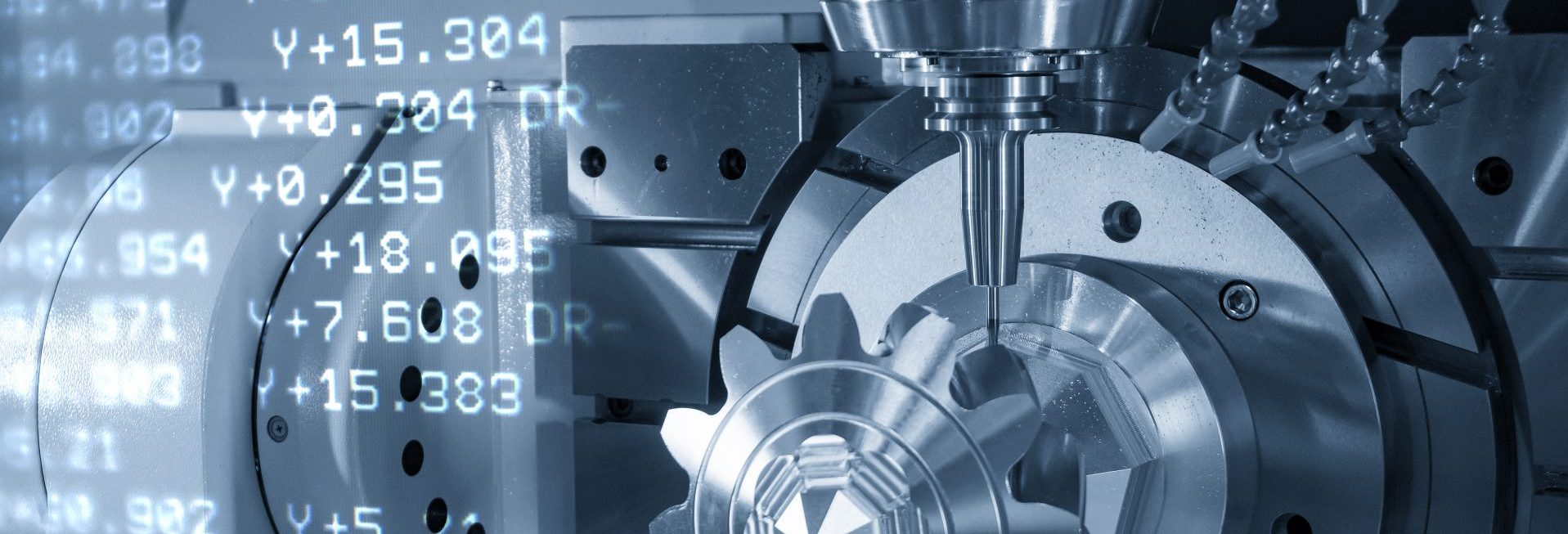CAM – Precision and efficiency in precision engineering
CAM, Computer-Aided Manufacturing, is software that converts designs into actual parts through CNC machining. It works by creating detailed machining instructions that guide the machine through the manufacturing process. These instructions take into account key factors such as the machine’s capabilities, the tools being used, and the materials involved.
One of CAM’s biggest advantages is its compatibility across different machines. A single program can run on multiple machines without the programmer needing to remember every detail of each one. Modern CAM systems also support advanced 5-axis machining, enabling the production of more complex components with high precision. At OKU, we have 13 five-axis machines in use—making CAM a vital part of how we plan and carry out production.
CAM improves efficiency right from the start. By factoring in manufacturing requirements already during the planning phase, it helps save time, reduce waste and errors, and keep production costs under control.
Another key feature is simulation. CAM software allows us to run through the entire machining process in advance, so any potential issues can be identified and resolved early on. This is especially useful when quoting for complex components, as it provides a realistic view of machining times and potential production challenges. For our sales team, this means quotes can be based on actual manufacturing costs—not just estimates.
At OKU, CAM is more than just software—it’s an essential part of delivering high-quality precision components, efficiently and reliably.
What does CAM do in precision engineering?
In fine mechanics, precision is everything—and that’s where CAM truly shines.
Using CAM software, the process planner defines:
- tool paths based on a 3D model
- the correct machining sequence
- cutting parameters, such as spindle speeds and feed rates
This careful planning ensures that even highly complex geometries can be machined accurately and efficiently. In a field where tolerances are tight and quality expectations are high, CAM plays a key role in maintaining consistency throughout production.
What is a post-processor – and why does it matter?
A post-processor acts as the crucial link between CAM software and a CNC machine. Its job is to “translate” a neutral CL file (Cutter Location file)—which contains tool paths, cutting speeds, and tool information—into machine-specific G-code that the CNC can understand and execute.
CL files can come in binary formats (such as CLDATA) or in a readable ASCII format based on the APT language. But simply having the data isn’t enough—the code needs to be tailored to the specific characteristics of each machine.
That’s where a high-quality post-processor makes all the difference. It adapts the output precisely to suit the machine’s requirements, ensuring smooth, accurate, and reliable machining. In short, it’s essential for efficient and error-free production.
At OKU, we have the expertise to develop post-processors in-house, and we also work closely with machine and software suppliers to fine-tune them. It’s all part of our commitment to quality, precision, and continuous improvement.
The human behind the CAM
CAM is a powerful tool, but it only works well in the hands of a skilled expert. In fine mechanics, having a skilled CAM Process Planner really makes a difference.
Careful planning from the very start ensures a high-quality finished product, cost-effective production, and optimal machine performance throughout the process.
OKU (Okun Koneistuspalvelu Oy) is a company specialising in fine mechanics and precision machining. The precision parts manufactured by OKU are used in various industries where extreme accuracy and attention to detail are essential. Founded in 1978, the family-owned company has production facilities located in Outokumpu, Finland. With nearly 60 machining machines across two factories, the company uses modern automated technology. OKU employs approximately 40 people. For more information, visit www.oku.fi.
